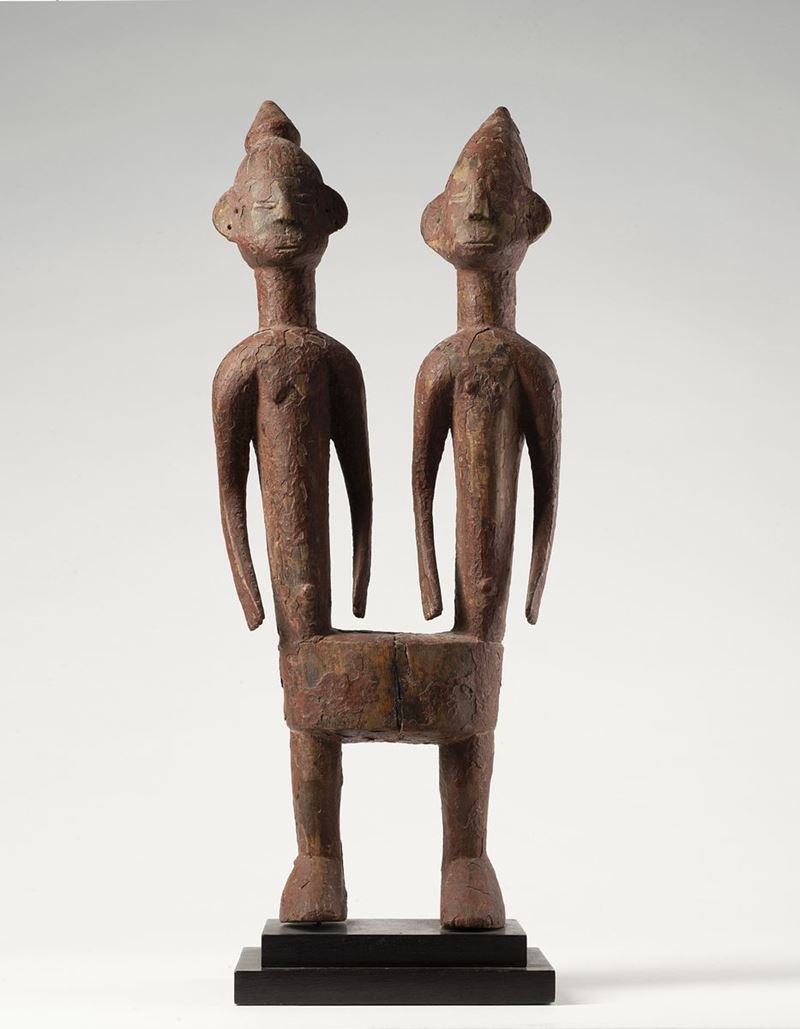Information
H 52 cm
Two-figure sculpture
Provenance
- Former Paolo Morigi collection (Lugano);
- Former private collection (Lugano);
Exhibition
Literature
- MORIGI PAOLO “Raccolta di un amatore d’arte primitiva”, Magliaso, Lugano & Kunstmuseum Bern, Switzerland 1980, fig. 208, page 223;
- FARDON RICHARD & STELZIG CHRISTINE “Column to Volume - Formal innovation in Chamba statuary” 2005, London, fig. 4d, page 45;*
(*) Researchers Richard Fardon and Christine Stelzig carried out a detailed study on these rare Chamba sculptures, composed by two figures, including this one. Their research about the history of these sculptures were based on a series of works belonging to museums, art dealers and private collectors, from which they collected documents dating back to the years between 1970 and 2003. In fact, very little information about these works had been available in the previous years. The researchers studied the various historical, ethnographic and morphological aspects of the statues and identified two different styles for those composed by two figures, i.e. a traditional style and a stylistic variation.
- Traditional style: stylised bodies and diagonal crests, which is higher on the woman’s head. Rectangular and protruding mouth. Straight upper body and rounded shoulders. Arms bent at the elbows that seem hanging from the shoulders. Open hanging hands showing all fingers. Female figures have a small breast or none. The navel connects the upper body to a large column, which divides the rest of the body of the two figures. There is one leg per figure, bent at the knee and feet have no toes;
- Stylistic variation: the statue in this lot is an example of this variation.There is a space between the arms and the upper body of the male and female figure of this statue. The arms, moreover, hang in a natural way from the shoulders. The female figure has a small breast and can be recognised by the iconic bun. The bodies of the two figures are placed in a way that makes each arm aligned with the upper body.As for the date of their creation, the authors believe that this statue (52cm, figure 4d) is the oldest in the group as it was carved following an archaic style. It was later verified that this statue was one of the first collected.The authors have, in fact, found a declaration by the former owners with note 5 on page 116, listed on page 117, that confirms that the statue belonged to the Swiss art collector George F. Keller, who purchased in the final years of 1930s from a businessman in Paris.(see Mrs. Morigi’s letter of 8th May 2003);
Contact
Condition report
Suggested lots
Caricamento lotti suggeriti...









